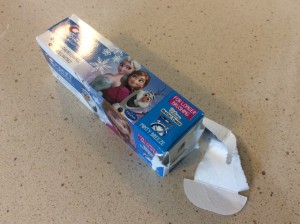After working on Great Lakes protection and restoration issues for the past 15 years, it’s hard for me to think of a time when so many accomplishments occurred in such a short period of time. That said, last week was good week—actually, a great week. Especially when you consider that much of the work that went into these accomplishments started well over a decade ago. It’s what I’d consider winning the triple crown of Great Lakes restoration. Here’s what was accomplished late last week… Plan 2014 for Lake Ontario and the St. Lawrence River Enacted! After fifty years of regulation that forced unnatural water levels and flows on Lake Ontario and the St. Lawrence River—devastating the health of the ecosystem and degrading tens of thousands of acres of wetlands—the U.S and Canadian governments recently seized a once-in-a-generation opportunity to restore the health of the lake and river by enacting “Plan 2014.” Plan 2014 is a modern, balanced water level management plan that will work with nature to restore the health of the lake and river, while continuing over 50 years of shoreline protection. The plan will restore 64,000 acres of wetlands, which is largest wetlands restoration effort in U.S. history outside of the Florida Everglades!
If that wasn’t enough, the plan will also rebound populations of fish and wildlife such as the Northern Pike and Black Tern, provide a $5.3 million annual increase in hydroelectric power production, provide a $12 million annual increase in recreational activity along the St. Lawrence River and Lake Ontario, and continue over 50 years of significant shoreline protection. And one more thing—the cost of implementing Plan 2014: $0.
We have to thank the 25,000+ of our members that signed petitions and wrote letters in support of Plan 2014 in the last couple years, which contributed to the 36,000 expressions of support that we—along with our coalition partners—delivered to the White House Council on Environmental Quality in D.C. this fall. We couldn’t have done it without your support!
Great Lakes Restoration Initiative Act passed! We often tout the importance and success of the Great Lakes Restoration Initiative (GLRI), which has provided well over $2 billion since 2010 to fund over 3,000 restoration projects throughout the Great Lakes. The GLRI has ushered progress in cleaning up toxic hot spots, fighting invasive species, restoring critical habitat, and so much more; yet we still have a lot more restoration work to do.
While the GLRI was funded in each federal budget since 2010, the program has never been authorized by Congress. Without an authorization, the GLRI could be at risk from changing administrative and congressional priorities. Authorizing the program provides greater long term certainty for restoration to continue, and allows more long-term, complex restoration work to move forward.
After advocating for an authorization since the program started several years ago, the GLRI Act was finally passed as part of the Water Infrastructure Improvements for the Nation (WIIN) Act (formerly known as the Water Resources Development Act) with bipartisan support from Congress last week! The law authorizes the GLRI for $1.5 billion over the next five years!
Great Lakes Restoration Initiative funding continues! As previously mentioned, the GLRI has provided well over $2 billion for more than 3,000 restoration projects since 2010. The GLRI has been biggest boon to Great Lakes restoration in decades, helping to push forward long-awaited projects, such as the cleanup of the Buffalo River. The GLRI has provided over $100 million for 229 projects in New York State alone. The success of the program has been dependent upon Congress continuing to fund the GLRI year after year, in order to ensure progress continues and previous investments are not wasted. The Continuing Resolution (CR) passed by Congress last week continued funding for the GLRI at current funding levels through April of 2017, ensuring that progress to protect and restore the lakes can continue!
We certainly couldn’t have accomplished this without a multitude of partner organizations, which have been with us every step of the way. And very importantly, this success has been dependent upon strong and enduring support from the public. Our members have signed petitions, written letters, spoken at public hearings, and even traveled to Albany and Washington. We thank you!
As we take time to celebrate these victories for the Great Lakes, we also recognize that our work is never done, and the New Year will certainly bring new challenges. Although as we’ve seen time and time again, with strong support from you—the public—there is nothing we can’t accomplish. We look forward to working with you to continue to advance Great Lakes restoration in 2017!


